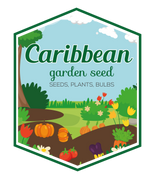Growing Hot Pepper from Seeds
Growing Hot Pepper from Seeds
Growing hot pepper from seeds can be enjoyable and sometimes frustrating as the germination can be slow and irregular even when grown under the optimal conditions. Some varieties can take up to 6 weeks and longer to germinate so you must be patient.
The home gardener must understand that varieties come from humid tropical regions and others come from dry desert regions. After years of testing, and by trial and error, we have come up with the best method for growing hot peppers. You should follow the planting instructions below to prevent poor germination, even if you have been growing hot peppers for years using other methods.
Life Cycle:
Zone 8 or lower: Grow as annual
Zone 9 or higher: Perennial
Common Mistakes
Using potting soil instead of lightweight seed starting mix
Over-watering the seeds before they sprout
Too low temperature
Inadequate ventilation
Type of Pots
The best method is to use plastic cell packs or plastic 4” square pots. If you are reusing the plastic pots from last year, remember to soak the pots in 50% bleach before using them. Do not use peat pots as they tend to absorb and retain too much moisture for growing some types of hot peppers.
Seed Starting Mix
Use good quality lightweight seed starting material with slow release fertilizer mixed in. We recommend using Miracle-Gro® Seed Starting Potting Mix.
Planting Method
Fill the plastic containers with the seed starting mix. Plant the seeds 1/4″ deep, or as a general rule, twice as deep as the size of the seed. Remember if you plant the seeds too deep, they may not sprout and rot. Write on a plastic garden marker the variety name and date, then place it in the cell pack or plastic pot.
Water the seeds with very hot water. This will speed up the germination process. Then place the pots in an environment where the temperature will remain around 85 degrees. Some hot pepper varieties may not germinate and rot if the temperature is below 85 degrees. A small utility room will do if you do not have an indoor garden stand greenhouse.
Do not use plastic tray covers when growing hot pepper seeds. They tend to create an environment that is too humid for some hot pepper varieties to germinate. Make sure you have adequate overhead ventilation, as seeds need the proper amount of air (oxygen) to germinate.
The seeds do not need sunlight to germinate, but once they sprout you need to place them under fluorescent lights for 10 to 16 hours per day. You can reduce the temperature to 70 degrees after they sprout.
After the seedlings reach 2″ tall, water the plants once a week with half concentration of liquid plant fertilizer. This will enhance the growth of the plant and give them a good start. After they reach 4” tall, you can water the plants with full strength liquid plant fertilizer. Keep using the overhead fan to prevent disease.
Transplant the plants outdoors in the garden when the plant has reach at least 12″ tall, and 2 weeks after the last frost date. Check your Cooperative Extension Office if you are not sure of the last frost date. Always transplant outdoors on an overcast day, preferably a day before rain is expected.
We recommend using organic fertilizer when transplanting outdoors. This will enhance the root growth which is very important in having healthy and vigorous plants. Your harvest will increase by some 300% if you use these organic fertilizers.
Use black landscaping material to protect the plants from weeds and disease. When it rains, sometimes the soil splashes underneath the leaves which can cause disease. Landscaping material greatly eliminates this problem. It also warms up the soil and retains moisture. To prevent the branches from breaking off with the heavy yields, use round tomato cages. We recommend using soaker hoses or drip irrigation too. They will simplify the watering process.
Apply Slow Release Plant Food around each plant and your are done! Periodically spray the hot pepper plants with Water Soluble All Purpose Plant Food.
Growing Hot Peppers in Containers
Peppers can be grown all year long in containers. It is suitable for apartment dwellers and gardeners who live in cool regions where the number of growing days are limited. Many pepper enthusiast grow peppers in pots so they can have fresh peppers all year long. It’s best to use 5 gallon containers so the roots do not get too over-crowded. Please Search Container Gardening for tips on growing hot peppers in containers.
When planting your hot peppers, keep in mind that the warmer the soil is, the happier your plants will be. Also be sure not to crowd them. They need circulation to help resist disease. An easy, organic way to help keep the soil moist for your hot pepper plants is to use grass clippings (if chemically untreated) as mulch. Dry soil is the enemy of hot pepper plants.

![[Seeds] - Caribbeangardenseed](http://caribbeangardenseed.com/cdn/shop/files/gift-card-gift-card-1_1024x1024_dfa857db-9150-4315-a362-7f0bb3fb9c47_60x28.png?v=1703978838)
Comments
Leave a comment